Types of Bamboo Flooring
When trying to decide on the appropriate type of bamboo floors for your home, there’s more to consider than just the pros and cons of bamboo flooring. Learning about the various grain types, installation types, and color and texture types will help with the decision making process. Each grain, color, and texture type will present décor issues while installation methods may impact convenience and cost, as well. Read on to learn more about the types of bamboo flooring.
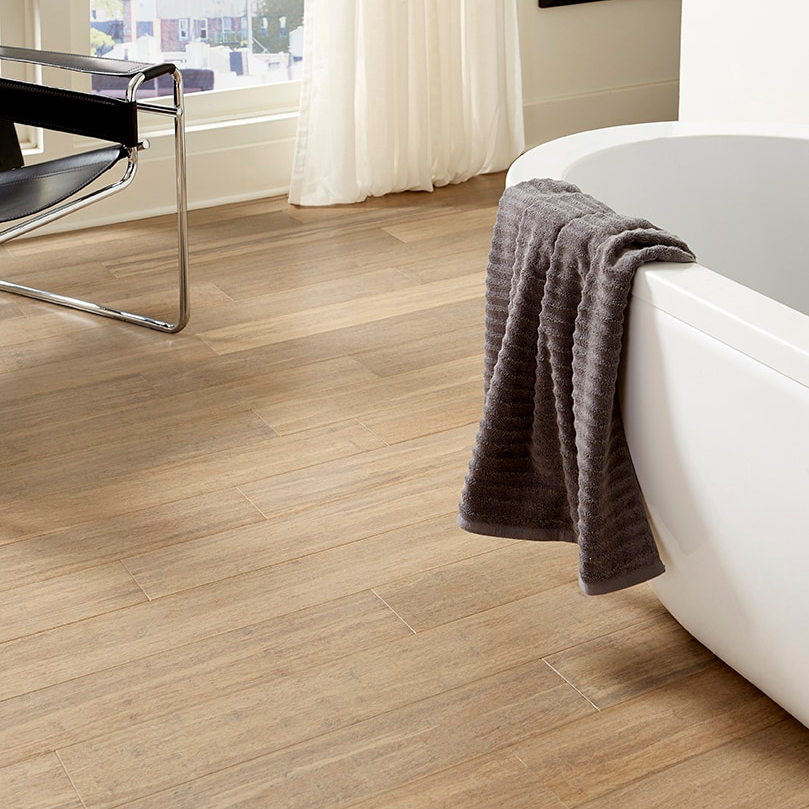
SKU: 15273477
Grain Types
When it comes to different grain types of bamboo, there are three main choices: horizontal, vertical, and strand-woven. Each one has different characteristics that will help buyers decide which type of bamboo to purchase and install in their home or business. The grain type to purchase depends greatly on the overall look the buyer is trying to achieve.
Horizontal Bamboo
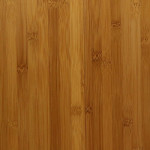
Horizontal bamboo refers to planks placed next to one another facing in a horizontal direction. They are attached to each other this way before being pressurized and finished, randomly displaying the knuckles, or growth rings, of the stalk.
Vertical Bamboo
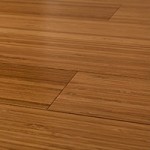
Vertical bamboo refers to planks placed next to one another facing in a vertical direction. They are attached to each other this way before being pressurized and finished, creating a smooth uniform look.
Strand-Woven Bamboo

Strand-woven bamboo refers to bamboo planks made from the remaining strands of the stalk trimmed away from the long bamboo fillets. These are compressed together with an adhesive before being pressurized and finished. Strand-woven bamboo is twice as hard as horizontal and vertical bamboo.
Installation Types of Bamboo Flooring
Choosing bamboo flooring for your home or business based on the installation type first is a wise decision because some installation types are more complicated and thus more costly than others. There are a few different installation methods for bamboo flooring. These include nail or glue down process, glue-seam floating installation, and glueless-click installation. Regardless of the installation type chosen, be sure to purchase more bamboo flooring than required to finish the job. You need to account for mistakes in measurement, imperfection in boards and future repairs.
Nail Down/Glue Down
This process is similar to installing a hardwood floor. Since the flooring is very hard, it is nearly impossible to get the nails flush with the flooring using a standard hammer. The use of special, specific tools for the job, including an electric hammer or stapler, is very important to the success of completing this job correctly. Installation instructions and guidelines depend on the sub-flooring. DIYers that are very experienced in this area can install this type of bamboo flooring, otherwise it is best to have a professional install the flooring.
Floating: Glue-Seam
This kind of installation requires an underlayment to protect the bamboo from the sub-flooring material. You may require a moisture barrier as well. It is important to lay out the flooring before adding any glue adhesive, because with how quickly the adhesive dries, it will be impossible to separate the flooring planks and correct any mistakes after just a few seconds. It is best to lay out the complete floor design and go back in sections with the glue. You can do this as a do-it-yourself job, but for the inexperienced, it is best left to professionals.
Floating: Glueless-Click
The simplest of bamboo installation methods, the glueless-click method does not require any glue or nails, so it is easy for those new to floor installation to do. The planks simply click together and fall into place. For those who are looking to install their own flooring and do not boast a lot of DIY experience, this is the best way to do it. There should be no concern about whether or not the floor will come apart after the installation is complete because the pieces will fit together very snuggly. The finished product will appear much like the other installation methods.
Color Types
When it comes to color types, buyers have several options: natural, carbonized, stained, and direct print. Each one of these options has distinct properties about it to help homeowners decide which one to use. Regardless of which color type chosen, the strength and durability of the bamboo remains the same, with the exception of carbonized which is softer than the other types.
Natural
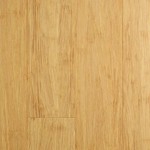
Natural bamboo has no colorants or stains added to it. It has a very light, blonde type color to it. This type of bamboo is easy to find and goes with most décors.
Carbonized
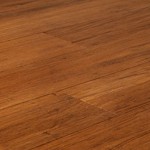
Carbonized bamboo allows for the sugars in the plant to caramelize. The bamboo is boiled for a longer period of time. The caramelized sugars therefore add color to the bamboo. Depending on the length of boiling time, the shades of bamboo will vary. Carbonized bamboo is softer than other types of bamboo.
Tiger

Tiger bamboo is made using a combination of natural and carbonized strips. This creates a unique “tiger stripe” pattern.
Stained

Stained bamboo is treated with a wood stain to change the coloring of the material. It is available in multiple shades, from light, to dark. The variety of stain options makes it easy to find one that matches any décor.
Direct Print
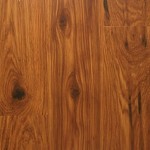
For homeowners who want the appearance of another kind of wood – such as oak, cherry, or maple – while still having the other benefits of bamboo, direct print bamboo flooring prints the patterns seen on other hardwoods onto the bamboo before it is pressurized and sealed.
Surface Texture Types
For surface texture types, homeowners and builders have three main choices: smooth, hand scraped, and hand sculpted. Each one will provide a unique look. Look at various samples of texture types before deciding which one to use.
Smooth
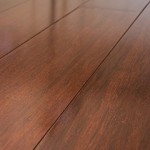
Smooth bamboo flooring is machine coated with several layers of sealant. It helps to keep a dust free surface that is easier to clean and recommended for those who suffer from allergies or hay fever.
Hand Scraped
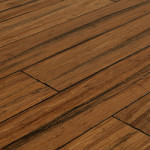
Hand scraped bamboo flooring is scraped by hand to give the floor and aged, “antique” look. It offers a unique approach to bamboo flooring in appearance in a home or business, and is available in a variety of styles and colors. This texture option typically makes the flooring more costly because of the manual labor involved in its creation.
Hand Sculpted
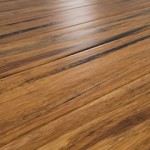
Hand-sculpted bamboo flooring is similar to hand scraped, but provides a less distressed look. This kind of bamboo is usually hand worked to look older, or antique, so it too, will cost more.



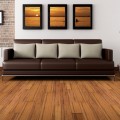

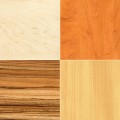
Calvis R Harmson
A hardwood floating floor for is perfect for overlaying a pre-existing floor covering. The con is that you may have to adjust your doors according to the higher rise that your floor will have. You may experience your doors dragging across your new floors which will cause scratches to the new finish. Access and adjust accordingly.
Sebastian
Any experiance with floor heating and bamboo floor covering?
BuildDirect Product Expert Team
Hi Sebastian,
Thank you for getting in touch! You will need to check the warranty and installation instructions of the specific bamboo floor you want to install to check whether it has been rated for under floor heating. We usually find that you cannot use under floor heat beneath bamboo because it will react to the changes in temperature and there will be too much expansion and contraction. Please let us know if you have any other questions!
Beatrice
I had kiln-dried bamboo flooring from Lowe’s installed by my contractor over concrete subfloor. After seven years, there are some dents and indentations ~ no dogs, cats; few kids, and I’m in a power wheelchair ~ and I occasionally clean with a Shark steamer and it comes out beautiful! No changes in color that I’ve noticed.
Pingback: Flooring Blog
June
I’m done with taking shoes off at the door. That is why we want hard flooring instead of carpet. Is there a Bamboo floor type that is resistant to everyday wear with high heels, shoes and old dogs ? How long could I expect the floor to look nice with shoes on – but no kids, no pets ??
charlotte
this is my second attempt at submitting my question….hummmm.
I want to know if new flooring can be laid directly over existing oak hardwood floors? The floor is in need of a good sanding, but has a lot of nails and patches.
I am interested in the possibility of installing bamboo. I have cats and dogs and people in and out all the time. In order to preserve the new wood, is it best to have people wear booties or walk around shoeless and would I also have to pad all furniture should I decide do have bamboo flooring installed?
Rob Jones
Hi Charlotte,
I think it’s possible to install a new floor over an oak floor. But, if it were me, I might consider looking for a flooring restoration company first to see whether or not I could get some value out of what’s already there. A professional restoration professional would know the best means of removing the nails, and sanding the floor in the safest and most efficient way possible. And you might get some attractive and vintage hardwood flooring you can be proud of at the end of it all.
As for your pets, footwear, and pads on furniture legs, it’s always best to clip nails, take shoes off at the door, and apply those pads respectively.
Thanks for your question!
charlotte
I have oak floors. They are old and badly beaten with lots of nails. I want to know if I can have new flooring laid directly over this floor. I am interested in possibly having bamboo installed.
r. heuberger
I was wondering and hoping that the very light color of a natural bamboo floor might mellow and darken with age, like pine. Is that true? Thank you for your response.
Erich Buecking
Ummmmm… ….. Learning Center People…
I notice lots of unanswered questions here….
Does anyone read this page anymore???
Erich Buecking
I am concerned about scratching… Some of the comments I have read about certain types of bamboo flooring claim that they got scratched up quickly… What would be the differences between the different types of bamboo flooring as far as which ones are more scratch resistant please? Please, if possible, list all the different types of bamboo flooring and rate them in order of softest to most scratch resistant.
– Thanks! – Erich
Henry chacon
Which type of bamboo flooring is recommended for cedar home and color.
richard baur
Our cat is declawed in front but NOT in back. When she plays, she runs fast and jumps on a throw-rug for a ride across the floor. During her wind-up she digs in hard to get momentum therefore leaving scratch marks just like a dragster car. Will stranded, dark stained bamboo be damaged by this very unusual kitty play? Many thanks….am looking forward to hearing from you.
Peter Baxter
We have some water damaged stranded flooring, probably up to 400 mm long, board ends have become darkened, what are our options for repair. Board colour is natural ,will the staining be through the thickness?
Please advise
NJ Jones
I have 3 dogs and am moving into a new home soon. My oldest dog is blind and has become incontinent and urinates inside even if he’s just been walked. My fawn pug sheds. What is the best type of flooring for my situation?
Paul Sorci
Which type(s) of bamboo flooring is recommended for use over a hydronic radiant heated floor?
Lydia Marques
How does bamboo rate on the Taber testing scale? I am concerned with scratches as our dog hunts scorpions when they come inside our home.
Spowers
Can bamboo we refinished like hardwood floors? If so, does this apply to all types of bamboo flooring?
Julian Marcuzzi
Hi,
All types of Bamboo Flooring can be refinished.
Once the material has been sanded, you would need to reapply the protective layer and any stain that was removed during the process.
Thanks
Neil
How about off gassing, is there any with bamboo. I had new carpets put in 2 months ago and want to rip them out because I still can’t live in the place with the off gassing, which does not both anyone else who goes in there.
Thanks
Rodney Noriega
Hi Neil,
Our bamboo floors comply with the European E1 standard for safe levels of formaldehyde release emissions, which are stricter than those found in North America.
For our strand woven products, they are classified as “E0” products which, by definition, is formaldehyde free. Any product that has less than 5 points per million for formaldehyde release emissions is conciered an E0. Any E0 porduct adheres to the strictest regulation in the world for release emissions.
In the general industry, if you are looking for bamboo, make sure they meet E1 or E0, or they comply with CARB (California Air Resources board) which is also a very strict requirement in California.
Rodney
Sandy Flor
IS THERE SO MUCH UPKEEP FOR BAMBOO FLOORING. WHAT DOES IT MEAN IF THE BAMBOO FLOORING IS CARBONIZED? WHAT ABOUT MAINTENANCE? WILL THE FLOOR
GET DULL OVER THE YEARS? PLEASE WE NEED TO KNOW BEFORE WE CAN DECIDE. WE
ARE VERY INTERESTED ABOUT THE BAMBOO FLOORING. THANK YOU SO MUCH.
Julian Marcuzzi
Bamboo flooring requires relatively low maintenance. When a spill occurs, clean it up quickly and the floors will be fine. The floors are not good in areas of excessive wetness such as bathrooms, patios, etc. Outside of that, they are low maintenance, durable floors.
When a bamboo floor says that is it carbonized, that is referring to an initial boiling process which brings out the sugars and essentially caramelizes the wood. This brings out a different, darker tone yet potentially makes it softer, unless it is strand woven. Strand woven bamboo produces one of the strongest, more durable floors there is.
As far as longevity of the floor, our bamboo floors come with a semi-gloss finish and UV protection. This will protect against fading over the years.
You are very welcome and I hope I have helped you make your decision!
TC
We are renovating our home and looking to put wood floors throughout. After a couple of trips to a local flooring distributor, we chose bamboo. We specifically requested nail down installation, but found when we returned to pick up our order, the second (less than helpful) salesman had put our order in as quick click installation. Before we go through the hassle of return and exchange, we would like our biggest question answered – will this floating floor be noisy?
Julian Marcuzzi
This will depend on the type of underlayment that you choose to install over. If the underlayment you decide to use has an acoustical element to it, sound transfer/noise from walking over the floor will not be an issue.
Elisabeth Cline
I’m interested in getting bamboo, but am wondering if I drop some oil paint on it, will it ruin the finish? Also, will my cat or dog scratch bamboo the same as our “engineered” hardwood? And finally, my bed is quite heavy, will it scratch the finish when we move the bed?
Gary
I like the hand scraped bamboo but would realy like it in a dark hight gloss brown and rich. I would also like the flooring to be self installed without the use of glue or nail because it is going to be intalled on concrete. African walnut rose is one colour of choice.
James Komenda
Hi Gary,
Thanks for getting in touch. We do have several hand-scraped bamboo flooring options available, and I would be glad to arrange for you to be sent samples overnight so you can hold the product in your hand. The pictures online are representative of the product itself, but in my opinion it is always a good idea to get a sample prior to placing an order if you have the time.
With this particular style, if you are installing over a concrete sub-floor you will need to glue the product down in order to maintain the manufacturer warranty on the product. You want to use a 100% urethane based adhesive. The brand we carry is Complete Adhesive.
Let me know if you have any further quetsions and I will be glad to help out.